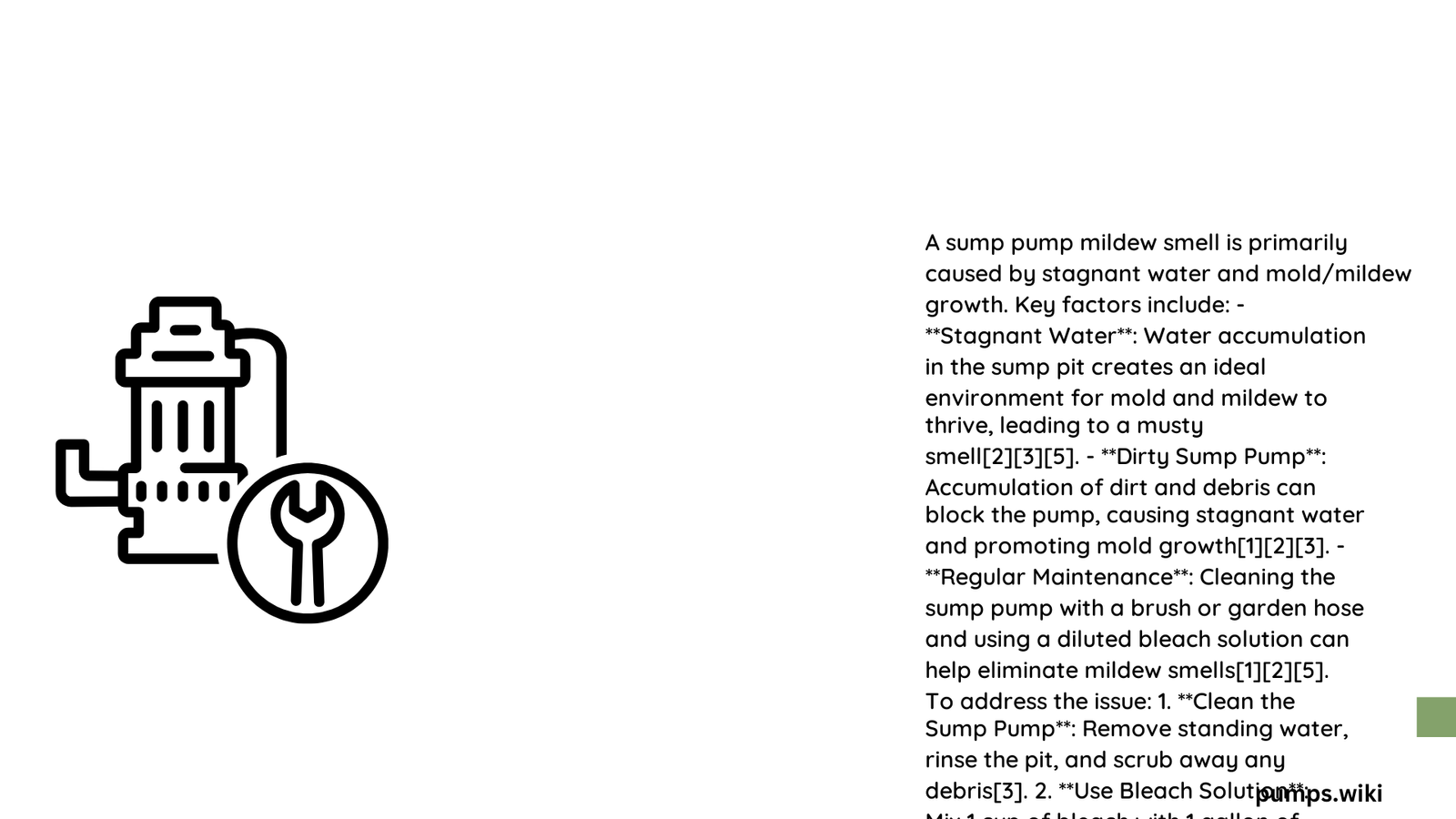Sump pump mildew smell can transform your basement from a functional space to an unpleasant environment. This pervasive odor emerges from a complex interaction of moisture, stagnant water, and microbial growth within your sump pit. Homeowners often struggle with this issue, which not only creates an unpleasant atmosphere but can also indicate potential underlying problems with drainage, humidity, or pump functionality.
What Causes Sump Pump Mildew Smell?
Why Does Moisture Accumulate in Sump Pits?
Moisture accumulation in sump pits occurs due to multiple interconnected factors:
- High Humidity Environments
- Basements naturally have higher humidity levels
- Moisture condenses on cool surfaces
-
Creates ideal breeding ground for mildew
-
Water Stagnation Mechanisms
- Infrequent pump activation
- Improper drainage systems
- Blocked or malfunctioning check valves
| Moisture Source | Potential Impact |
|---|---|
| Groundwater | Direct pit contamination |
| Condensation | Continuous moisture buildup |
| Drainage Issues | Prolonged water retention |
How to Identify Sump Pump Mildew Smell?
Recognizing the characteristics of mildew smell involves understanding its unique olfactory profile:
- Musty, earthy odor
- Slightly sweet, damp scent
- Persistent even after cleaning
- Strongest near the sump pit area
What Are the Primary Breeding Grounds for Mildew?
Mildew thrives in specific environmental conditions:
- Humidity levels above 60%
- Temperatures between 77-86°F
- Stagnant water
- Limited air circulation
- Organic material presence
Effective Strategies for Sump Pump Mildew Smell Elimination

How to Clean Sump Pit Thoroughly?
Cleaning Procedure:
1. Disconnect power to the sump pump
2. Remove standing water completely
3. Scrub pit walls with bleach solution
– Mix 1 cup bleach per gallon of water
4. Rinse thoroughly
5. Dry completely before reactivating
What Preventive Measures Can Be Implemented?
Prevention Checklist:
– Install proper drainage systems
– Use dehumidifiers in basement
– Regularly inspect sump pump
– Maintain consistent water levels
– Ensure proper ventilation
– Apply waterproof sealants
Can Professional Intervention Help?
While DIY methods are effective, professional services offer:
– Advanced diagnostic tools
– Comprehensive system evaluation
– Specialized cleaning techniques
– Long-term maintenance plans
Technical Considerations for Sump Pump Maintenance
What Technical Factors Influence Mildew Growth?
Technical aspects affecting mildew development include:
– Pump efficiency
– Float switch functionality
– Check valve performance
– Pit construction materials
– Groundwater table levels
Conclusion
Addressing sump pump mildew smell requires a multifaceted approach combining regular maintenance, proper installation, and proactive moisture management. By understanding the underlying causes and implementing strategic solutions, homeowners can effectively control and prevent unpleasant odors.
Pro Tips
- Schedule bi-annual professional inspections
- Monitor humidity levels consistently
- Invest in quality drainage solutions
- Replace aging sump pump components
Reference:
– EPA Moisture Control Guide
– Sump Pump Maintenance Resources
